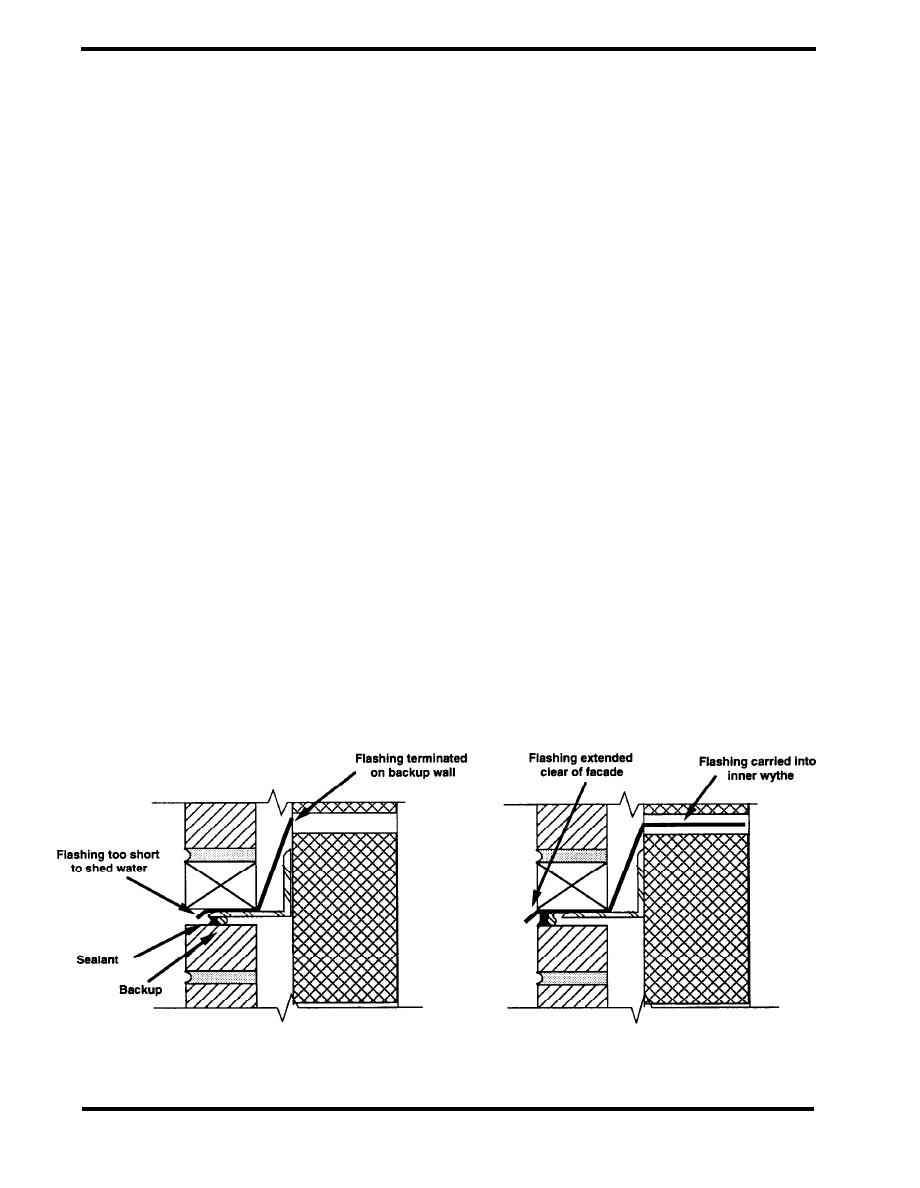
SYSTEMS/MASONRY
Flashing is required anywhere water might otherwise accumulate or tend to enter the building
interior. These locations include the following: above wall openings such as window heads, below
wall openings such as window sills, where the wall structure rests on the foundation, at shelf
angles, at wall-roof intersections and at parapet copings. A flashing material of good quality must
be specified in the design, based on the following qualities: impervious to moisture penetration,
resistant to corrosion from the atmosphere or caustic substances in mortar, strong enough to resist
puncture, abrasion and other damage during installation, and both easily formed into the desired
shapes and able to retain these shapes in use. Preformed copper sheet flashing, with soldered
joints and expansion provisions, provides good performance. Galvanized sheet steel, aluminum
and lead can be corroded from substances in the mortar and must have protective coatings. The
flashing design must maintain continuity of the flashing at corners and other interfaces, and dams
must be employed where flashing terminates such as beyond window jambs. In order to achieve
the required continuity, flashing installations need to be carefully detailed at all interfaces such as
windows, corners and columns. Adjoining pieces of flashing should be overlapped and properly
sealed to each other. Potential interferences with other envelope elements that might damage or
puncture the flashing, such as shelf angle bolts or ties, must be avoided. In cavity walls, the
flashing should be carried up into a mortar joint of the inner wythe. And perhaps most important of
all, the flashing must extend beyond the exterior face of the building. Aesthetic considerations are
sometimes allowed to prevent this essential extension of the flashing, defeating its effectiveness.
Flashing will not be effective unless there are an adequate number of weepholes through which
accumulated water can drain, located immediately above the flashing. Recommendations for the
spacing of weepholes range from 400 to 600 mm (16 to 24 inches) on center. Weepholes can be
provided by leaving mortar head joints open, using removable oiled rods or sashes, or installing
plastic or metal tubes in the head joints. Weepholes can become plugged with mortar during
construction, thereby losing their ability to drain. Construction techniques exist to prevent this
problem, and these are described below in the section on Construction Requirements. Other
weephole deficiencies include their complete omission or inadequate spacing or number.
UNACCEPTABLE
ACCEPTABLE
Figure 4.2.3 Unacceptable and Acceptable Flashing and Sealant Details (CMHC 1989)
PAGE 4.2-6


 Previous Page
Previous Page
